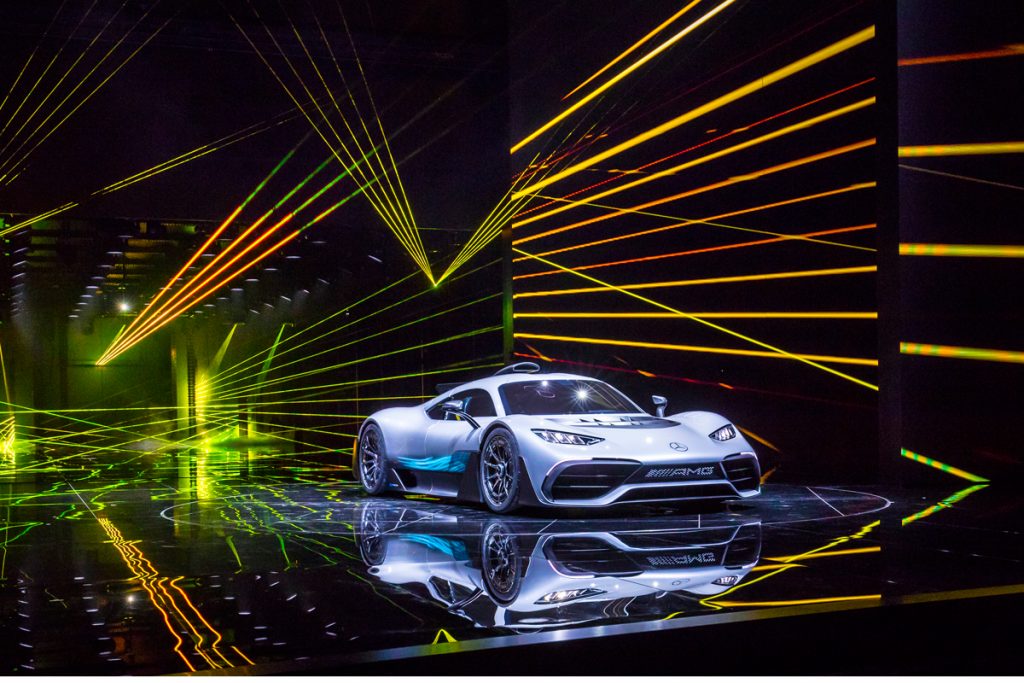The Ultra-Safe, Semi-Autonomous Concept: Mercedes-Benz 2019 ESF
Insight into what designers and engineers are doing to make driving safer

While the entire automotive industry shifts its attention toward autonomy and electrification, it’s important to remember that the keystone to a successful automotive brand is the safety of its vehicles—whether they be higher-capability autonomous rides or fully-electric hypercars. To remind consumers and industry members that the safety of the passengers precedes all else, Mercedes-Benz releases a concept vehicle nearly every 10 years. In 2009, the Mercedes-Benz ESF introduced a slew of future-forward features that’d eventually be implemented into some production vehicles just years later, including a seatbelt-based airbag, night vision, car-to-driver communication and much more.
For 2019, Mercedes-Benz introduces the hybrid powertrain-powered ESF: a compact four-door based on the new GLE to be debuted at the ESV convention next month and at Frankfurt Motor Show in September. We got a first look at the vehicle and were impressed with the range of new safety features and concepts introduced—some which we will likely see in upcoming production vehicles; others which serve as great ideas to consider but may not be as readily available due to cost, regulations or legal hurdles.
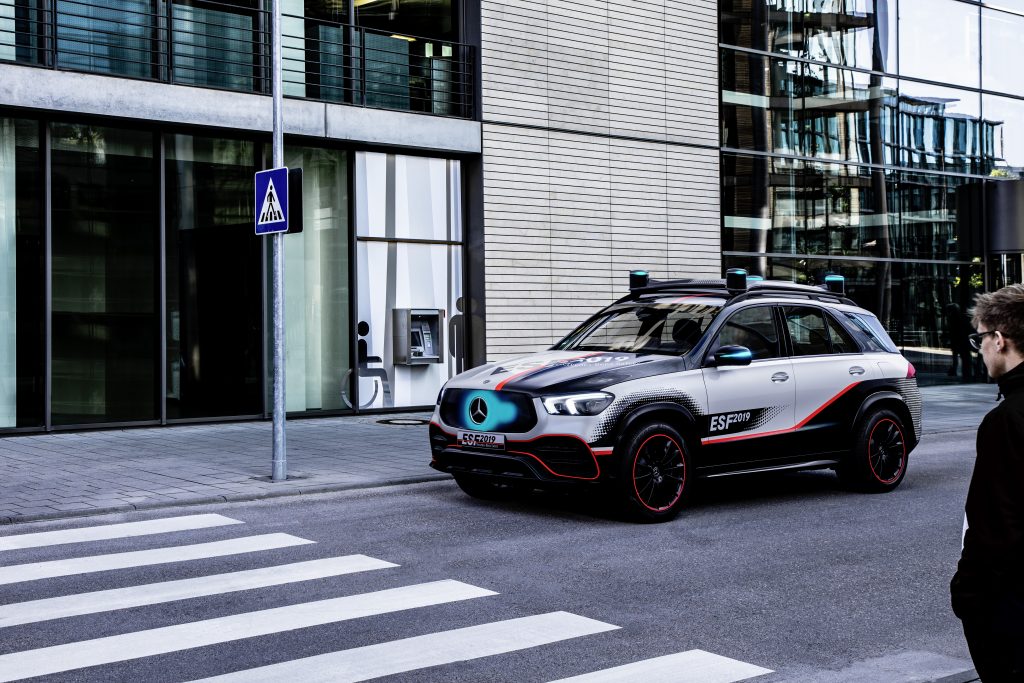
“We want to be closer to the market with all these decisions,” Head of Vehicle Safety for the company, Professor Dr Ing Rodolfo Schöneburg, says of announcing a concept every 10 years. The ambitious concept debuts a number of ideas and—as history proves and Schöneburg explains—these shouldn’t be too far from production scale.
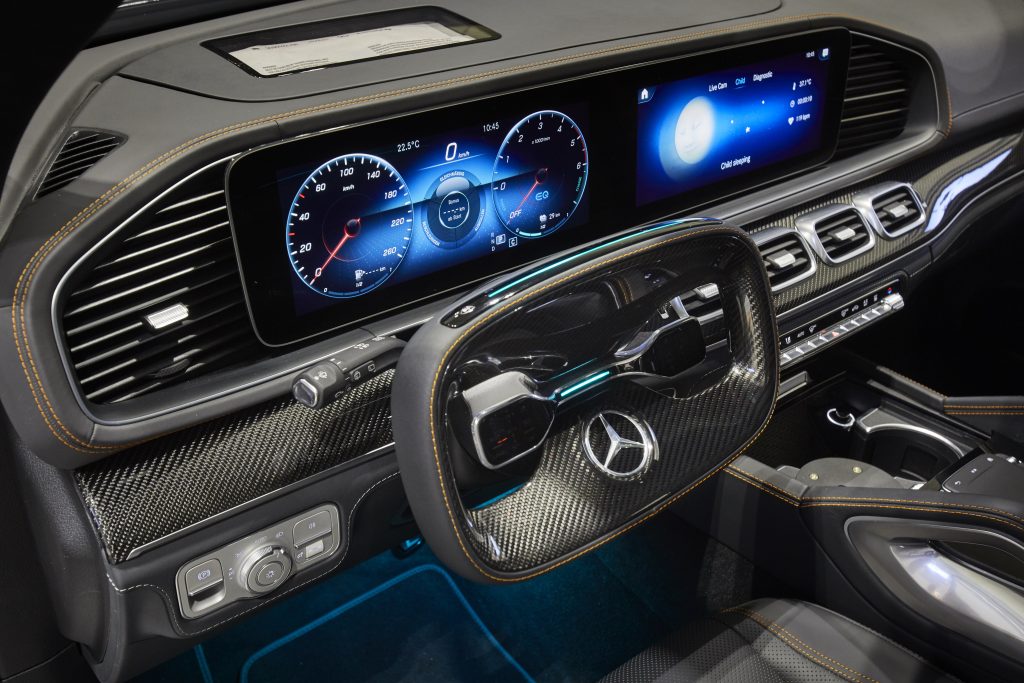
The new ESV has front and back panels for LED-projected cooperative communication channels (where messages or icons can be displayed), a new “holistic” steering wheel that retracts when the vehicle is in automated mode, a self-deploying warning signal robot, a PRE-SAFE impulse rear-wheel-drive which deploys (and accelerates) if the car senses an impending rear collision, new airbag and seatbelts, a new take on infant seating and much more. While some of features are intended for use with a nearly fully-autonomous vehicle, a lot of them are indicative of full-scale adoption and widespread accident decline.
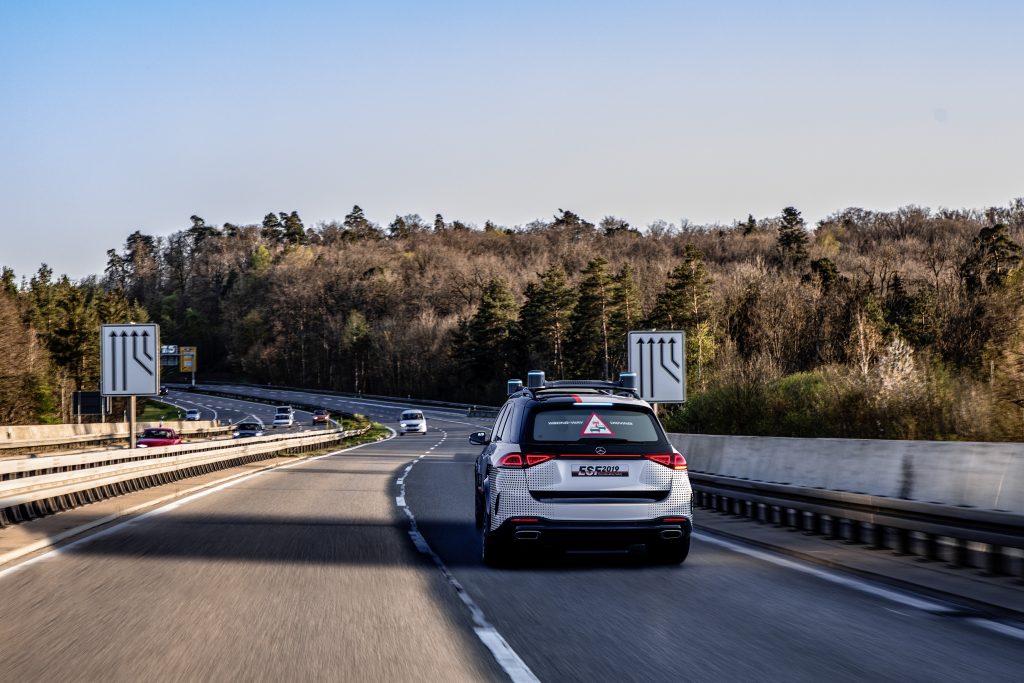
A few of the most prominent innovations are flashy tools that can be used now—including messaging during stopped traffic and better airbags. Others are hidden with the processes of the vehicle. Crashes haven’t changed much in the past 10 years, but the car’s reaction time has.
“We have roughly a hundred milliseconds during the crash where you have to protect the occupants and the other road users,” Schöneburg says. “In a hundred milliseconds, you have to decide which airbag, which seatbelt, you have to inflate them—after a hundred milliseconds, all is over. This is the same as 10 years ago, but we developed PRE-SAFE 20 years ago and now we have much more time—two seconds even. [The car] can tension the seatbelt, close the windows, adjust the seats, close the sunroof and much more. Now, with our five-part environment sensing, we can push the occupant inside the car with small airbags in the seat when there’s a side crash coming.”
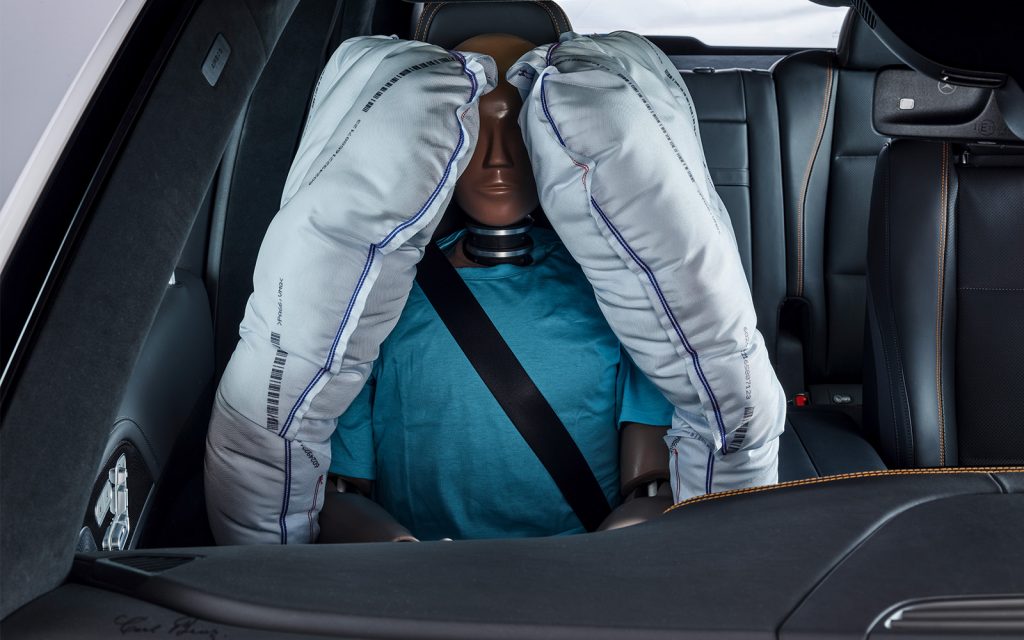
The majority of the features are centered on visual awareness: to see is to be safer. The rear window’s communication panel is an obvious evolution from traditional turn signals and brake-lights, giving way to an entirely new language to better communicate.

The vehicle’s autonomous setting is operated by the impressive technology evident on the vehicle’s exterior, as well as plenty of sensors and cameras. When in human-controlled mode, more subtle tech assists: lights inside mimic daylight to keep you awake, a more comfortable seatbelt is attached to the seat instead of the side pillar, an orange stripe around the vehicle illuminates in trickier driving conditions (for example, around turns, at night or when parking) without a power source. Also contained in the painted orange belt are sensors that detect impending collisions or speedier maneuvers.
Other safety measures include padded floors and retractable pedals. “Many accidents (or many injuries) occur because of contact with the pedals,” Schöneburg tells us. Mercedes-Benz is prepared to assure that drivers are safer in their cars, but the brand’s research and development goes even further to assist drivers post-collision or in the instance of a mechanical mishap.
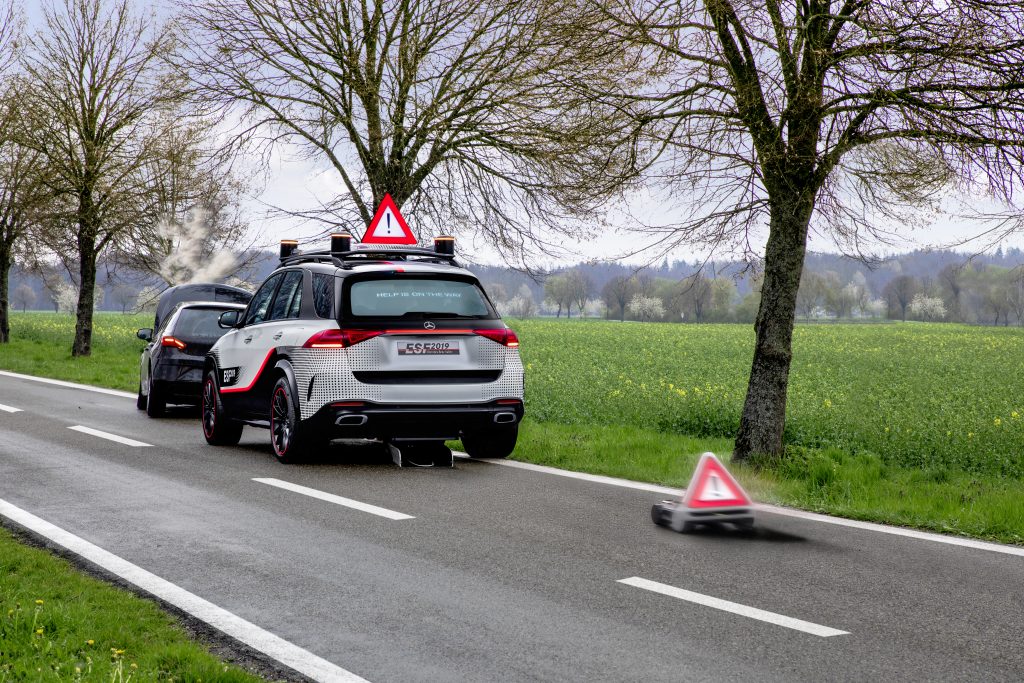
“When you have a dangerous situation, when you have a question, for example, or [you have to] secure space, normally you have to go out and [deploy safety] triangles to secure the scene—and it’s quite dangerous,” Schöneburg says. “When you have autonomous driving car in the future, and there is no driver on the inside, then you also need to have the possibility to secure the space. First, a triangle on the roof—something you can see, something so that people can see that something [ahead] was a car. Second, is a small robot that drives 150 meters behind the car and is flashing and you can see it very fast.”
“Most of the things we have showing here we do not have the right to put them on the street right now. We could say we will just wait while the government says you can protect some lives, but [what if we make some] proposals? That’s why we’re doing such a car,” project leader, Dr Julien Richert says. “This is our proposal. We try to use this car to push such ideas right now.”
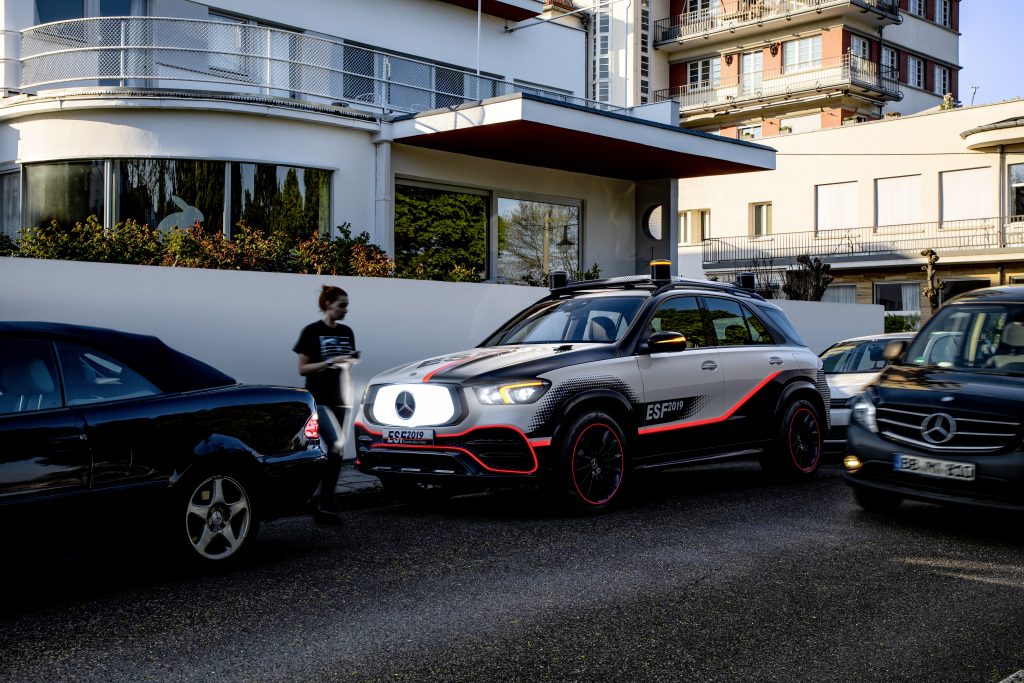
To keep pushing the industry forward, Mercedes-Benz argues, you must bring the public along, slowly introducing concepts to them just before launch—to remind them that their best interests are at the forefront of all developments.
“It’s what we call informed trust. In order for the customer—but also everybody on the street—to trust automated driving, you have to inform them of what’s going on. Of course, the autonomous cars are talking to each other. But this allows passengers and other people to understand that as well,” Richert continues. He’s happy that consumers are clued into what companies are making and working toward. “I have discovered over the last year or so,” he tells us, “That I am spending almost 100% of my time thinking about the future.”
Images courtesy of Mercedes-Benz


